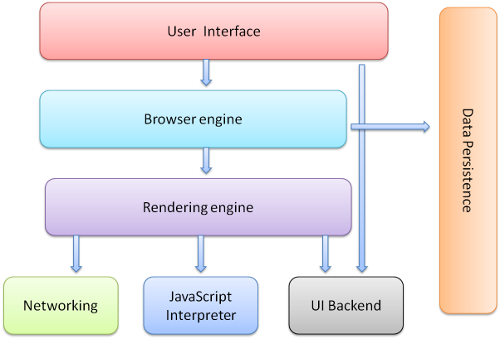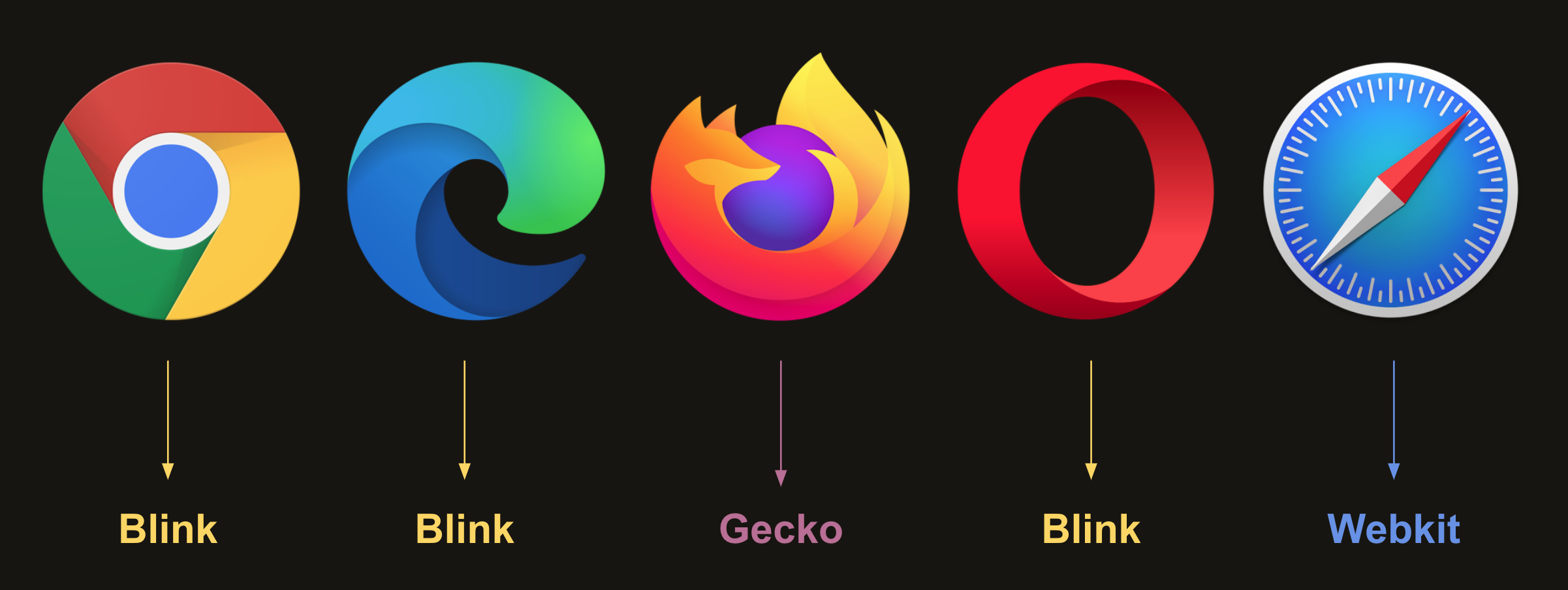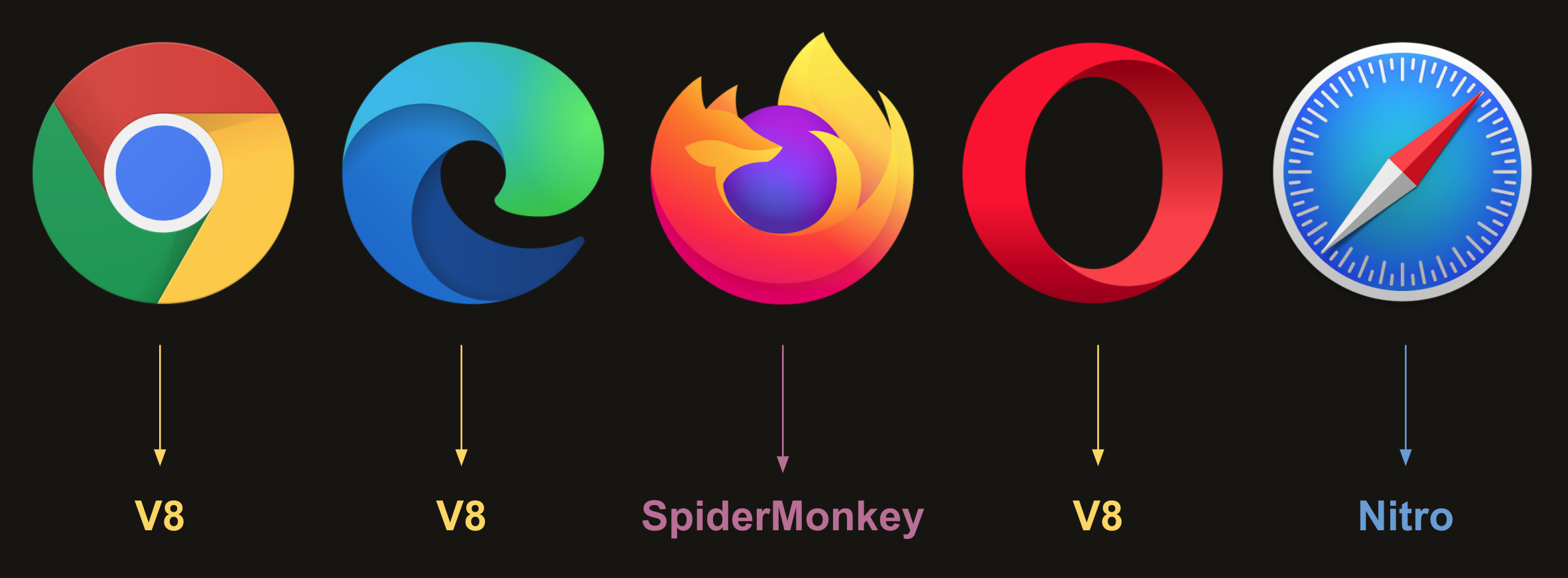As a new web developer you might be wondering why do we need to care that much about different browsers and why anyway do we have differences between browsers? in this article I am trying to demystify it for you so keep reading.
Speaking of the challenges web developers are facing while building a web app that can be accessible by every visitor, which was shared in a different article, including their speed of the internet (3G, 4G, or 5G), their device specs, their accessibility preferences, or their browser of choice, which is the one we are going to talk about in this article.
Components of a Web Browser
Browsers for a web user is a black box that they don’t really need to know what it does under the hood, they just write the domain name in the address bar and hit enter to get (without surprise) the website in front of their eyes 🤩
Well, that was a very abstract way of how the browser works, but we (developers) need to learn more about what does a browser do when the user write the url and hit enter until they get the web page fully loaded and fully interactive.
In the chart below, you can see the different components in any web browser and I will try to explain each part separately below:

You can find that browsers are usually consist of:
- User Interface
- Browser Engine
- Rendering Engine
- Networking
- JavaScript Interpreter
- UI Backend
- Data Persistence
What would be the difference between browsers?
Well, all the 7 parts mentioned above could be quite different from a browser to the other, and here is a quick overview for each of them:
1. User Interface
This component depends completely on the browser creators, it is about the browser UI itself, menus, address bar, back/forward buttons, bookmarks, and so on. This can be clearly visible even for the browsers that are based on similar rendering engines like chromium based browsers. so this part doesn’t relate to the web app running on the browser, it is more like the browser own interface.
2. Browser Engine
The browser engine acts as a bridge between the user interface and the rendering engine. It’s responsible for:
- Managing the interaction between the UI and the rendering engine
- Coordinating between different browser components
- Handling browser events and user interactions
Different browsers use different browser engines:
- Chrome/Edge/Opera: Blink
- Firefox: Gecko
- Safari: WebKit
3. Rendering Engine
This is one of the most crucial components that directly affects how your web pages are displayed. The rendering engine is responsible for:
- Parsing HTML and CSS
- Building the DOM and CSSOM trees
- Creating the render tree
- Layout and painting of elements
Major rendering engines include:
- Blink (Chrome, Edge, Opera)
- Gecko (Firefox)
- WebKit (Safari)
These differences in rendering engines can lead to variations in how web pages are displayed across browsers, which is why cross-browser testing is essential.

4. Networking
The networking component handles all the communication between the browser and the internet. It’s responsible for:
- HTTP/HTTPS requests
- DNS resolution
- WebSocket connections
- Security protocols
- Caching mechanisms
While the basic networking protocols are standardized, different browsers might implement:
- Different caching strategies
- Various security features
- Different connection handling methods
5. JavaScript Interpreter
Also known as the JavaScript engine, this component executes JavaScript code. Different browsers use different engines:
- V8 (Chrome, Edge, Opera)
- SpiderMonkey (Firefox)
- JavaScriptCore (Safari)
These engines might have:
- Different performance characteristics
- Various optimization techniques
- Different levels of support for JavaScript features

6. UI Backend
The UI backend is responsible for drawing basic browser widgets like:
- Checkboxes
- Input fields
- Windows
- Combo boxes
This component uses the operating system’s user interface methods, which is why the same browser might look slightly different on different operating systems.
7. Data Persistence
This component handles the storage of browser data, including:
- Cookies
- Local Storage
- IndexedDB
- WebSQL
- Cache Storage
Different browsers might:
- Have different storage limits
- Implement different security measures
- Handle data persistence in various ways
Why Does This Matter for Web Development?
Understanding these differences is crucial for web developers because:
-
Cross-Browser Compatibility: Different implementations can lead to varying behaviors of your web application.
-
Performance Optimization: Knowing how different browsers handle resources helps in optimizing your application.
-
Feature Support: Different browsers might support different features or implement them differently.
-
Debugging: Understanding browser components helps in identifying and fixing browser-specific issues.
Best Practices for Cross-Browser Development
-
Use Feature Detection: Instead of browser detection, use feature detection to ensure your code works across browsers.
-
Implement Progressive Enhancement: Start with basic functionality and enhance it for browsers that support advanced features.
-
Regular Testing: Test your application across different browsers and versions.
-
Use Polyfills: When necessary, use polyfills to provide fallback functionality for older browsers.
-
Stay Updated: Keep track of browser updates and new features to take advantage of them while maintaining compatibility.
Conclusion
Understanding browser components and their differences is fundamental for web development. While modern browsers are becoming more standardized, differences still exist and can affect how your web applications behave. By understanding these differences and following best practices, you can create web applications that work reliably across different browsers and provide a consistent user experience.
Resources
- https://en.wikipedia.org/wiki/Comparison_of_web_browsers
- https://en.wikipedia.org/wiki/Browser_engine
- https://dev.to/itswillt/the-components-of-a-browser-23mn
- https://nordvpn.com/blog/types-of-browsers/
- https://handbook.teamsimmer.com/the-web-browser/what-is-the-web-browser/
- https://en.wikipedia.org/wiki/Blink_(browser_engine)